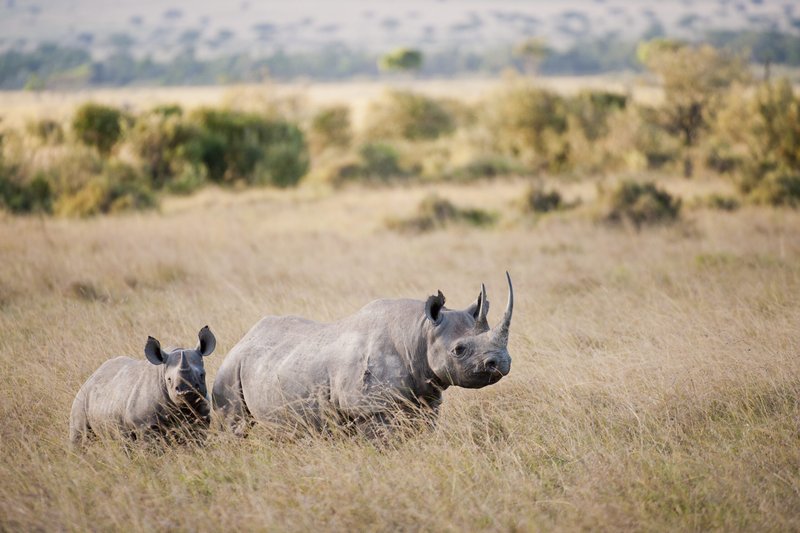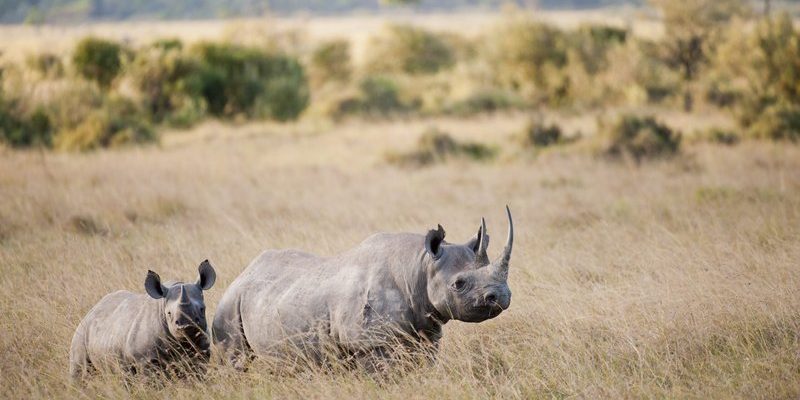
The black rhinoceros is primarily found in eastern and southern Africa. Their habitat isn’t just a random selection; it’s a crucial mix of open grasslands, savannas, and dense bushlands. Think of it this way: just as you wouldn’t want to hang out in a place that didn’t feel like home, black rhinos need specific environments that provide food, shelter, and safety. Unfortunately, these habitats have been reduced due to human activities, making it vital to understand where they roam and what their needs are.
Black Rhinoceros Habitat Overview
If you were to step into a black rhinoceros’s habitat, you’d notice a variety of landscapes. These range from savannas that stretch for miles to dense thickets of bushes. Each of these areas plays a key role in their survival.
– Open Grasslands: Black rhinos can often be found grazing in these areas, where they feed on grass and small shrubs. The open space allows for a clear view of potential predators.
– Wooded and Shrubby Areas: They also prefer habitats with dense vegetation. This gives them the cover they need from threats while providing food sources.
Honestly, their habitat preferences are like choosing the right couch to sit on. You want something comfortable and conducive to your needs. In this case, that means plenty of food and the ability to retreat from danger.
Current Distribution of Black Rhinoceroses
You might be wondering where exactly you can find these creatures today. Currently, black rhinoceroses are mostly found in a few specific countries in Africa, each with its unique conservation programs. The main populations are situated in:
- Tanzania: Home to significant populations, especially in the Ngorongoro Crater and several national parks.
- South Africa: This country has implemented successful conservation strategies, making it a safe haven for black rhinos.
- Zimbabwe: Here, they roam in various protected areas where conservation efforts are in place.
These locations are like their favorite spots in a big city—each with its own charm and resources. However, their numbers are dwindling due to poaching and habitat loss, which makes knowing their distribution all the more crucial.
Why Habitat Matters
Understanding the habitat of black rhinoceroses goes beyond simple geography; it’s about survival. The specific environments they inhabit have a direct impact on their health and ability to thrive.
Here’s the thing: if we lose their habitat, we’re not just affecting the rhinos. Entire ecosystems can be thrown off balance. For instance, black rhinos help to shape their environment through grazing. They munch on plants, which prevents overgrowth and allows other species to thrive. It’s a delicate dance of nature.
- Food Sources
- Breeding and Raising Young: These habitats provide safe spots for mothers to raise their calves away from predators.
When habitats are in danger, so are the future generations of black rhinos.
Conservation Efforts and Challenges
Despite their majesty, black rhinoceroses face significant challenges. As human populations grow, their habitats are continuously threatened. Conservation efforts are crucial in protecting these animals and their environments.
Various organizations work tirelessly to promote the survival of black rhinos. Some of the ways they do this include:
- Protected Areas: Establishing game reserves and national parks where rhinos can live safely.
- Anti-Poaching Measures: Increasing security for these amazing animals to prevent illegal hunting.
- Community Involvement: Educating local communities about the importance of rhinos and their habitats.
Let’s be real; without these efforts, we risk losing a species that has roamed the Earth for millions of years.
The Impact of Climate Change on Black Rhinoceros Habitats
Climate change is like a dark cloud looming over every creature on our planet, including the black rhinoceros. Changes in weather patterns affect the availability of food and water, altering their already fragile habitats.
For example, increased droughts can lead to:
– Decreased Vegetation: Less food means black rhinos struggle to find enough to eat.
– Water Scarcity: Access to waterholes becomes more limited, which is crucial for their survival.
– Habitat Shifts: The areas where they can live comfortably might change, forcing them into new territories where they might not thrive.
You might think of it like moving to a new house with a different climate. It can be tough to adjust, and sometimes, it doesn’t work out.
Future Outlook for Black Rhinoceroses
So, what does the future hold for black rhinoceroses? While there’s a lot of work being done, their survival hangs in the balance. Continued conservation efforts, combined with a commitment to protecting their habitats, are essential.
Positive trends in population growth have been observed in some areas. However, it takes a collective effort from governments, organizations, and individuals to ensure that these magnificent creatures can continue to roam and thrive in the wild.
As we work together to protect the black rhinoceros, we can take steps to ensure their habitat remains safe for generations to come.
In closing, the black rhinoceroses’ habitats are not just spaces they occupy; they’re essential for their survival and wellbeing. By understanding where they live and what they need, we can better appreciate these incredible animals and the challenges they face. Every step taken to protect their homes is a step toward safeguarding our planet’s biodiversity.

